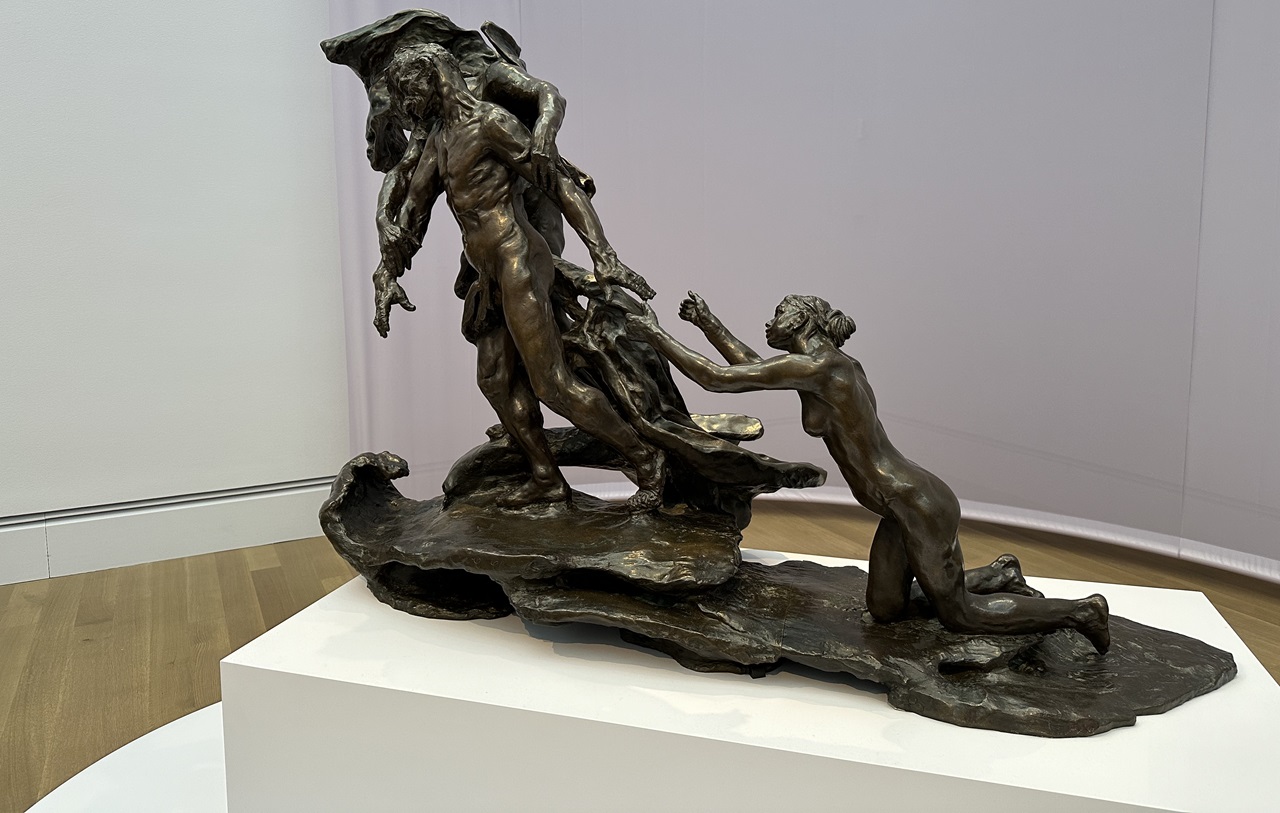
LOS ANGELES — In recent decades the work of women artists, as a ripple effect of the worldwide women’s movement, has come more to the fore. Women’s achievements have always had a prominent place in the traditional arts of weaving, ceramics, basketry, fashion, embroidery, quilt making, and other domestic endeavors, but they were obliged to defer to men in the so-called “fine arts” of painting and sculpture. Codes of what defined the “masculine” and the “feminine” prevented women, for example, from attending art classes where aspiring artists could study the nude figure.
There were exceptions along the way. A comprehensive exhibition currently on view at the J. Paul Getty Museum examines the life and career of Camille Claudel, whom art historians and connoisseurs often dismissed as being merely, beginning at the age of 19, the renowned French sculptor Auguste Rodin’s model, student and assistant, as well as lover.

Claudel collaborated with Rodin on many of his grand-scale projects, such as The Burghers of Calais and The Gates of Hell, creating such features as hands and feet for his figures, but her work was often uncredited. Certain unsigned pieces left behind in Rodin’s studio were assumed to be the work of the master, yet researchers have determined or made educated guesses in some cases, that it was actually the work of Claudel.
In her own day, however, when women sculptors were rare, Claudel was recognized for her brilliance and daring. It can now be said with much greater assurance that Camille Claudel (1864–1943) was among the most visionary artists of the late 19th century, yet her art remains little known outside of France. Though much of her work, at a glance, can be seen as the product of a certain time and place, in a few others she clearly looks forward to such movements as Expressionism and Cubism.
The decline of knowledge about her started during her own lifetime, as her family had her interned in a psychiatric institution for the last 30 years of her life.

The exhibition co-organized by the J. Paul Getty Museum and the Art Institute of Chicago includes about 60 sculptures, several of them variants on the same idea, iterated, for example, in plaster, bronze, and marble. This major exhibition of work, mostly imported from European holdings as little of her work is permanently housed in American collections, challenges viewers to reevaluate Claudel’s work, rethink her association with Rodin, and affirm her legacy within a more complex genealogy of Modernism.
Camille Claudel defied the social expectations of her time to create forceful sculptures of the human form. Among her gifts was a remarkable ability to capture the human condition at all ages, from childhood through adolescence, maturity, and old age. She clearly understood the universal themes of love, loss, and abandon, which she was able to communicate just as persuasively in small mantelpiece-sized work and monumental, life-sized swirling, hypnotically dancing figures.

Claudel left Rodin’s studio after a decade and faced criticism that her own work was derivative of her teacher’s. In the time remaining to her as an active artist, she set her mind to allowing her own voice to emerge.
Presenting Claudel’s major sculptures in the United States for the first time in over two decades, this exhibition explores the full range of her work, emphasizing her technical virtuosity in a variety of media, and her powerful voice.
The exhibition is on view through July 21, with all didactic panels presented in both English and Spanish.
More information about the artist and the Getty Center can be seen here. The Getty is located at 1200 Getty Center Drive, Los Angeles 90049. Admission is free, although the parking fee is rather steep. Consider taking public transportation.
We hope you appreciated this article. At People’s World, we believe news and information should be free and accessible to all, but we need your help. Our journalism is free of corporate influence and paywalls because we are totally reader-supported. Only you, our readers and supporters, make this possible. If you enjoy reading People’s World and the stories we bring you, please support our work by donating or becoming a monthly sustainer today. Thank you!









